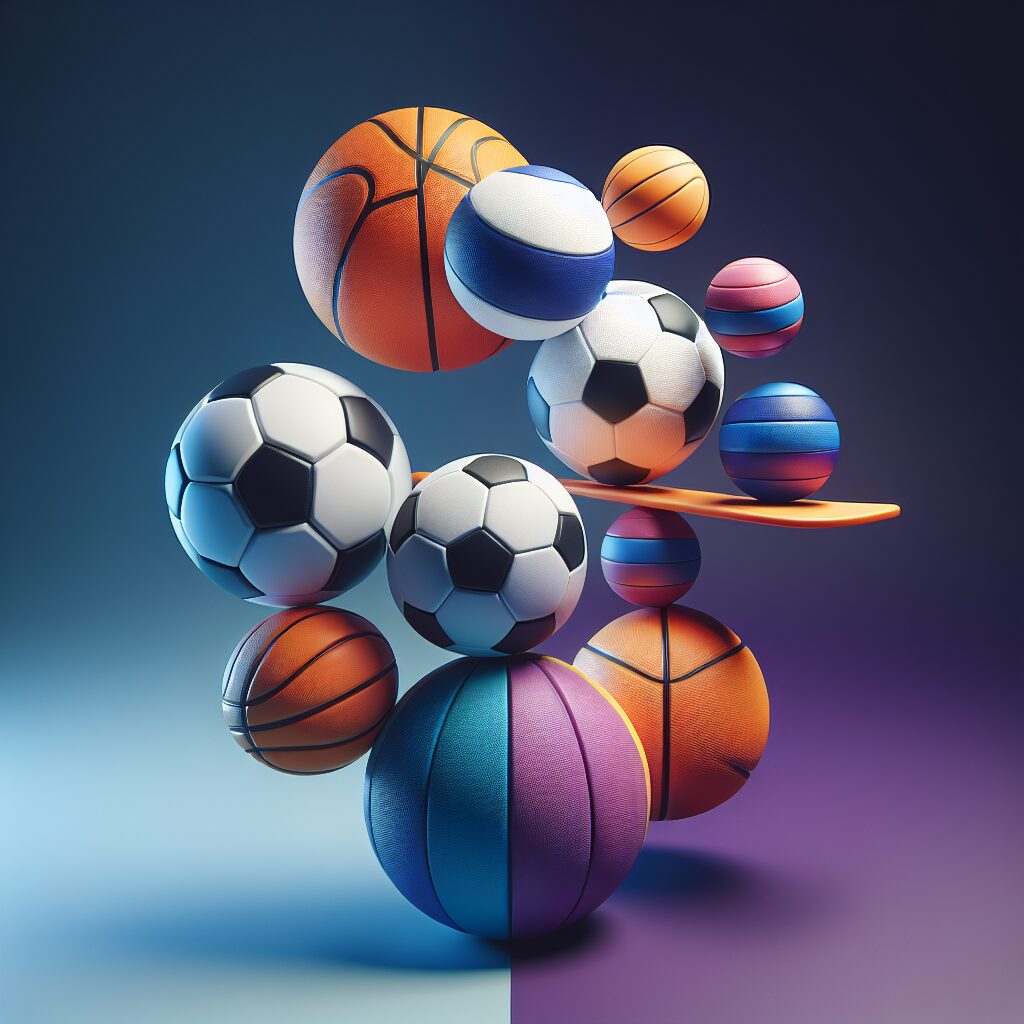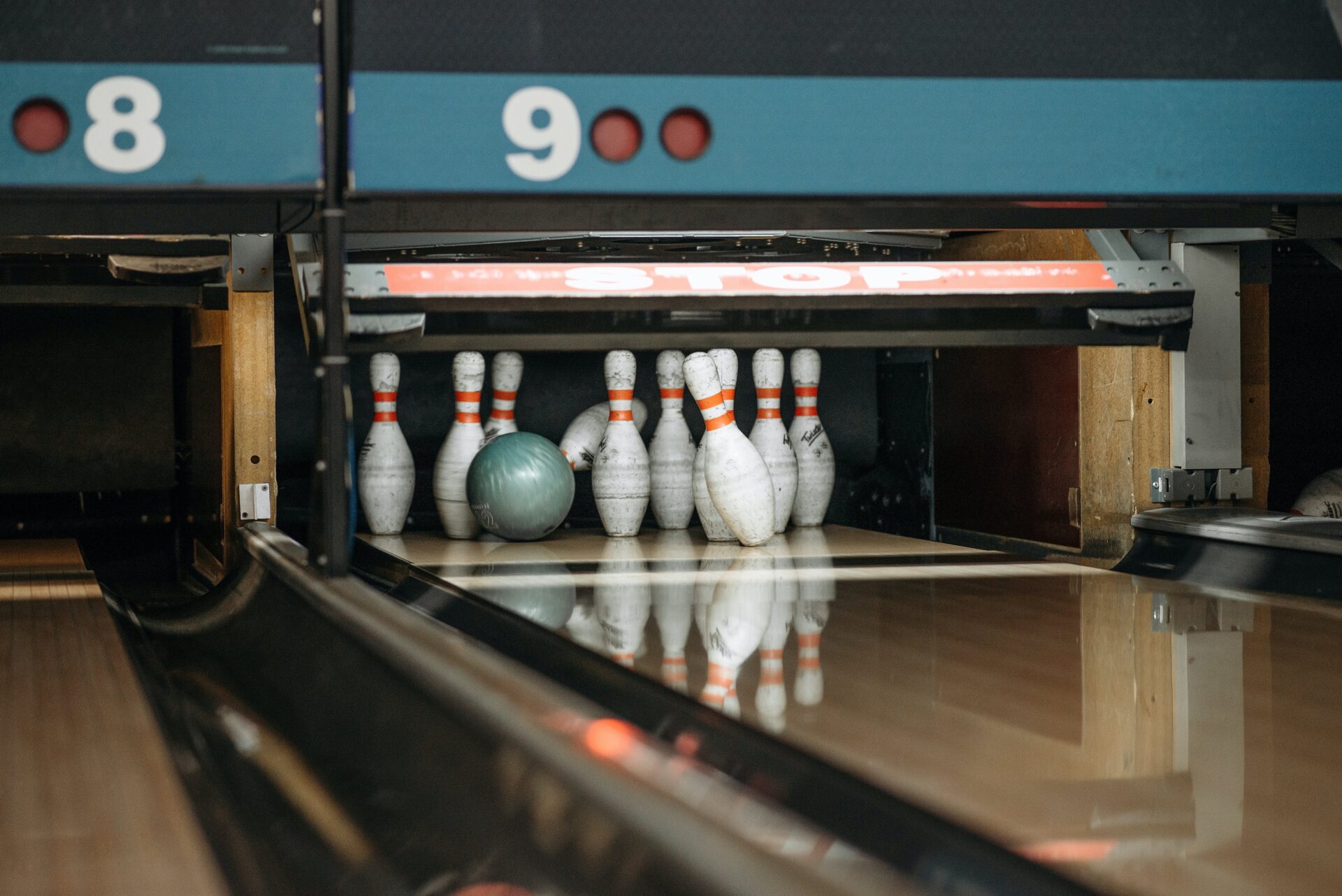Color Harmony in Sports: Balancing Ball Aesthetics
In the world of sports, the visual appeal of a game extends far beyond the players and their athletic abilities. The use of color is a key element that adds excitement and enhances the overall experience for both players and spectators. Color harmony, the strategic combination of colors, plays a crucial role in sports, particularly when it comes to the aesthetics of the ball itself. A striking example of this can be observed in the game of football, where the carefully selected colors of the ball not only enhance visibility but also create a sense of balance and harmony on the field.
In sports, color harmony on a ball can have a significant impact on the game. The colors chosen for a ball can affect the visibility and distinguishability for both players and referees, especially in fast-paced sports such as football or basketball. The strategic use of contrasting colors, ensuring clear visibility against different backgrounds and lighting conditions, can improve the accuracy and fairness of the game.
Now that we understand the importance of color harmony in sports, let’s delve deeper into the key takeaways from this article. We will explore how color selection impacts ball aesthetics, discuss the psychology of color in sports, and examine examples of successful color harmony in various popular sports. By understanding the role of color harmony, athletes, coaches, and even spectators can gain a deeper appreciation for the eye-catching and visually appealing aspect of sports. So, stay tuned as we uncover the secrets behind creating the perfect color harmony in sports.
Key Takeaways
1. Color harmony plays a crucial role in creating a visually appealing and balanced aesthetic in sports, enhancing the overall experience for both athletes and spectators.
2. In sports, color harmony can be achieved through different techniques such as complementary color schemes, analogous color schemes, and the use of neutrals, allowing teams and organizations to express their identity while pleasing the eye.
3. The choice of colors should also consider cultural significance, as different societies may interpret colors differently, emphasizing the need for both research and sensitivity when selecting color palettes for sports.
4. Sports branding and marketing benefit greatly from color harmony, as well-coordinated colors evoke emotions, create a sense of unity, and contribute to the long-term recognition and loyalty of teams or brands.
5. Coordinating the colors of various elements in sports, such as jerseys, equipment, facilities, and even the playing field, can significantly enhance the overall visual cohesion, contributing to a more enjoyable and immersive experience for athletes and spectators alike.
What are the Key Factors for Achieving Color Harmony in Sports and Balancing Ball Aesthetics?
Understanding Color Theory in Sports: An Introduction
In the world of sports, color plays a significant role in enhancing aesthetics, creating a visual impact, and promoting team recognition. When it comes to sports equipment, such as balls, achieving color harmony is essential to maintain a visually appealing experience for both players and spectators. With the right color combinations, sports balls can stand out, improve visibility, and contribute to a dynamic and engaging environment on the field. Let’s dive deeper into the key factors for achieving color harmony and balancing ball aesthetics in sports.
The Psychology of Color in Sports: Impact on Players and Spectators
The choice of colors used on sports balls can greatly affect the psychology and emotions of both players and spectators. Different colors evoke distinct responses, creating an atmosphere that can either increase motivation, instill a sense of confidence, or provide a calming effect. For instance, bright and bold colors like red and yellow are often associated with energy, intensity, and excitement, which can be beneficial for sports that require high levels of enthusiasm, such as football or basketball. On the other hand, softer hues like blue or green can promote a sense of tranquility and concentration, making them suitable for sports balls used in activities like golf or tennis.
The Importance of Color Contrast and Visibility in Sports
When it comes to sports balls, visibility is key to ensure optimal performance and fair play. The selection of colors that provide high contrast is essential, as it allows players to easily track the ball’s movement, anticipate its trajectory, and make accurate decisions in the game. For example, a soccer ball with a combination of light and dark colors, such as black and white, ensures maximum visibility even under different lighting conditions. Similarly, tennis balls with bright fluorescent colors enable easy tracking for both players and spectators, especially during fast-paced matches.
Building Brand Identity and Recognition through Color in Sports
In sports, it’s not just about playing the game; branding and recognition are also crucial aspects. The colors chosen for sports balls can help reinforce a team’s identity and create a lasting impression on fans and supporters. Whether it’s a particular shade of blue for a football club or a unique color combination for a basketball team, the use of consistent and recognizable colors on sports balls allows spectators to easily associate them with a specific team or brand. This not only enhances team spirit but also contributes to effective marketing strategies and merchandise sales.
Guidelines for Achieving Color Harmony and Balancing Ball Aesthetics
Now that we have explored the various aspects of color harmony in sports and how it impacts ball aesthetics, here are some practical guidelines to consider when selecting colors for sports balls:
1. Consider the sport: Different sports demand different color schemes. Analyze the specific requirements and nature of the game to determine appropriate color choices for their respective balls.
2. Understand the psychology: Research the psychological effects of different colors and select hues that align with the desired emotional and psychological impact on both players and spectators.
3. Opt for high visibility: Prioritize color combinations that ensure optimal visibility, allowing players to track the ball’s movement accurately under various lighting conditions.
4. Reflect team identity: Incorporate team colors and branding elements into the design of sports balls to strengthen team identity, promote recognition, and foster a sense of belonging among fans.
5. Regularly review and adapt: Stay up to date with current trends and technological advancements in color science to ensure the chosen colors remain relevant and effective in creating a visually appealing sporting experience.
By carefully considering color harmony and balancing ball aesthetics in sports, you can create a visually exciting and engaging environment that enhances gameplay, promotes team spirit, and leaves a lasting impression on both players and spectators.
FAQ
1. What is color harmony in sports?
Color harmony in sports refers to the strategic use of colors in the design and aesthetics of sports equipment, particularly balls, to create an appealing and cohesive visual experience.
2. Why is color harmony important in sports?
Color harmony plays a crucial role in sports as it enhances the overall aesthetics of the game, improves visibility for players and spectators, and helps in brand recognition and team identification.
3. How can color harmony be achieved in ball design?
Color harmony in ball design can be achieved through careful selection and arrangement of colors. It involves considering factors such as complementary colors, color psychology, and the overall branding and visual identity of the sport or team.
4. Does color harmony impact player performance?
While color harmony itself may not directly impact player performance, it can indirectly affect players by enhancing their focus, visibility, and overall experience with the game.
5. What are some examples of sports balls with excellent color harmony?
Examples of sports balls with excellent color harmony include the iconic white cricket ball with red stitching, the vibrant orange and black basketball, and the yellow tennis ball. These balls achieve a visually pleasing and cohesive look.
6. Can color harmony in sports balls influence spectator experience?
Yes, color harmony in sports balls can significantly influence spectator experience. It can enhance the visual appeal of the game, create excitement, improve visibility on the field, and contribute to a memorable spectator experience.
7. How does color psychology play a role in color harmony?
Color psychology is the study of how colors impact human emotions and behavior. In the context of color harmony in sports, understanding color psychology can help choose colors that evoke specific emotions or represent the values and attributes associated with the sport or team.
8. What are the considerations for color harmony when designing sports balls?
Considerations for color harmony in ball design include the sport’s rules and regulations regarding ball visibility, the team’s branding and colors, audience preferences, and any cultural or symbolic meanings attached to specific colors.
9. Can color harmony in sports balls contribute to team identification?
Absolutely. By incorporating the team’s colors and a visually cohesive design, color harmony in sports balls can strengthen team identification, create a sense of belonging among players and fans, and contribute to a unified visual identity.
10. Are there any specific trends or advancements in color harmony in sports?
Yes, color harmony in sports is continually evolving. Advancements in technology and materials allow for more precise color matching and printing techniques. Additionally, there is a growing emphasis on sustainability and eco-friendly color choices in the sports ball industry.
Final Thoughts
Color harmony in sports, specifically in ball aesthetics, plays a significant role in enhancing the overall visual experience for both players and spectators. The careful selection and arrangement of colors can create a visually appealing and cohesive look, contribute to team identification, and improve the game’s overall atmosphere. By considering factors such as color psychology, branding, and cultural relevance, designers and manufacturers have the opportunity to make a lasting impact through the harmonious use of colors in sports balls.
As the field of color harmony in sports continues to advance, it’s exciting to see the integration of technology and sustainability. With advancements in color matching and printing techniques, sports balls can now achieve unprecedented levels of precision and visual appeal. Furthermore, the increasing focus on eco-friendly color choices showcases a commitment to both aesthetics and the environment. Ultimately, color harmony in sports balls is an essential aspect of the game that can elevate the sport’s overall experience and leave a lasting impression on players and spectators alike.




